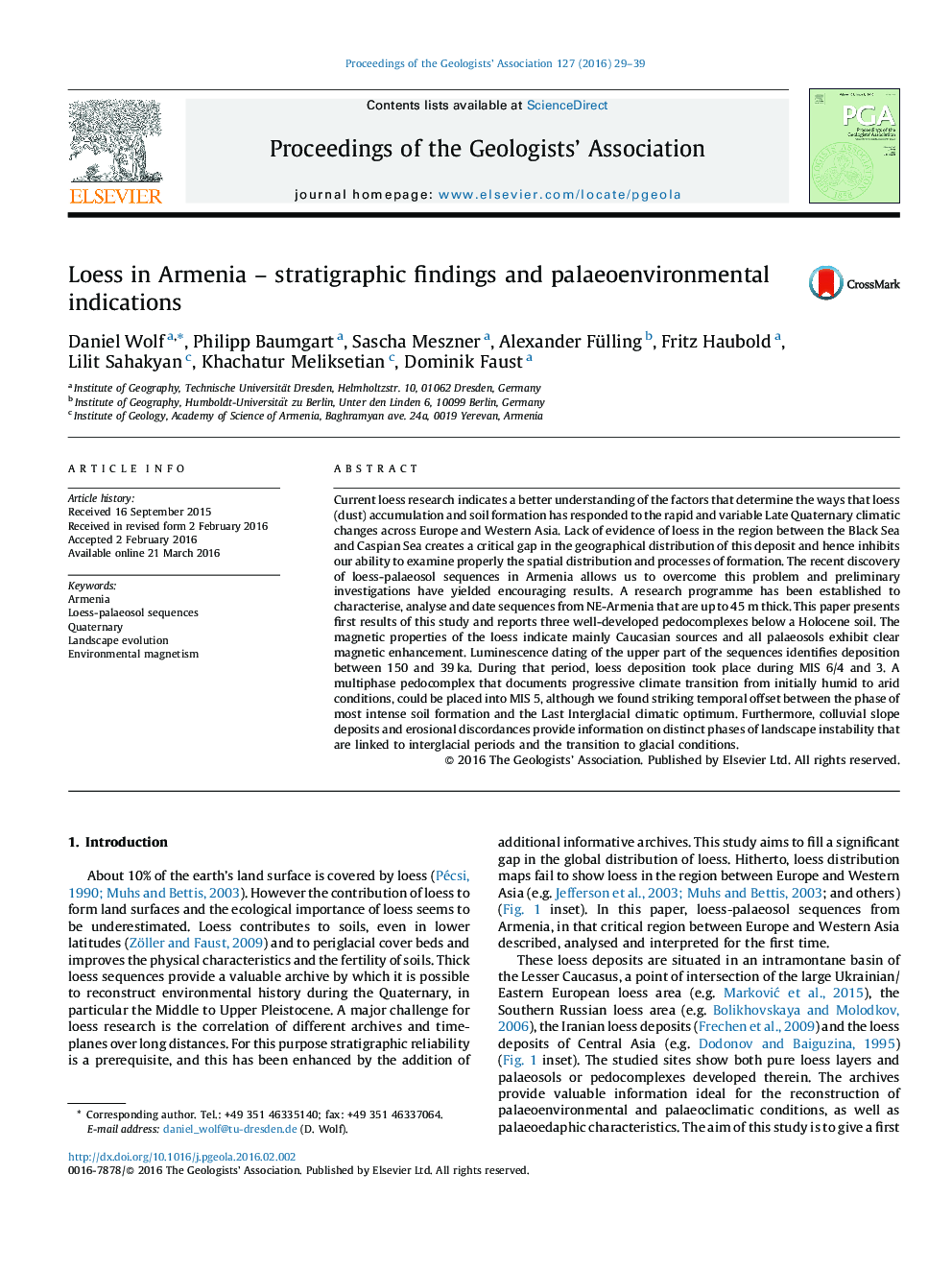| کد مقاله | کد نشریه | سال انتشار | مقاله انگلیسی | نسخه تمام متن |
|---|---|---|---|---|
| 4734614 | 1640645 | 2016 | 11 صفحه PDF | دانلود رایگان |
Current loess research indicates a better understanding of the factors that determine the ways that loess (dust) accumulation and soil formation has responded to the rapid and variable Late Quaternary climatic changes across Europe and Western Asia. Lack of evidence of loess in the region between the Black Sea and Caspian Sea creates a critical gap in the geographical distribution of this deposit and hence inhibits our ability to examine properly the spatial distribution and processes of formation. The recent discovery of loess-palaeosol sequences in Armenia allows us to overcome this problem and preliminary investigations have yielded encouraging results. A research programme has been established to characterise, analyse and date sequences from NE-Armenia that are up to 45 m thick. This paper presents first results of this study and reports three well-developed pedocomplexes below a Holocene soil. The magnetic properties of the loess indicate mainly Caucasian sources and all palaeosols exhibit clear magnetic enhancement. Luminescence dating of the upper part of the sequences identifies deposition between 150 and 39 ka. During that period, loess deposition took place during MIS 6/4 and 3. A multiphase pedocomplex that documents progressive climate transition from initially humid to arid conditions, could be placed into MIS 5, although we found striking temporal offset between the phase of most intense soil formation and the Last Interglacial climatic optimum. Furthermore, colluvial slope deposits and erosional discordances provide information on distinct phases of landscape instability that are linked to interglacial periods and the transition to glacial conditions.
Journal: Proceedings of the Geologists' Association - Volume 127, Issue 1, April 2016, Pages 29–39
